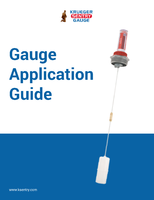Emerson's Wireless Technology Helps Chevron Improve Oil Field Personnel Safety and Increase Production
Smart Wireless networks reduce wastewater discharge during steam injection and deliver better down-hole pressure data at a $60,000 savings over traditional technology
AUSTIN, TEXAS (January 8, 2009) - Chevron's San Ardo, Calif., oil field operations boosted personnel safety, reduced wastewater discharge, and improved time and strategy for production by utilizing two Emerson Smart Wireless networks to monitor its steam injection process and measure down-hole well pressures.
Better Data from Wireless Steam Injection Monitoring Proves Valuable
Wireless Rosemount® pressure transmitters are installed at eight stations and on multiple steam lines leading to out-of-service wells undergoing steam injection at the company's operations in the San Joaquin Valley. Chevron switched to wireless monitoring after a Smart Wireless demonstration on one well confirmed an operator's suspicion that steam usage was actually much higher than what had been previously recorded.
"The Smart Wireless transmitter in the demo uncovered that we were injecting four times as much steam as needed into this particular well," said Paul Kinne, Chevron head operator.
The over-steaming created more wastewater, which had to be pumped from the well and treated before being discharged into wetlands draining into the Salinas River. The over-steaming also meant the company used more natural gas than necessary to produce the steam.
Operator safety has been improved and maintenance and travel costs reduced at the oil field because of the wireless technology. Personnel no longer need to visit the injection wells to collect data from traditional chart recorders or to check instruments for proper operation. The robust, self-organizing wireless network includes a Smart Wireless gateway, which communicates reliable data to the oil field's control room via an Ethernet network connection.
"In addition, operators no longer need to make and break high pressure and temperature connections, so their safety is improved," said Kinne.
Production wells are periodically taken out of service for several days in the San Ardo field so steam can be injected into the formation. The steam heats the heavy crude and eases its flow to the pump. Chevron estimates that the incorrect steaming measurements on the one well lost the company 14 production days four times each year. The excess steam could also have adversely affected oil flow within the formation, leading to further production loss.
A traditional hard wired monitoring network would have been very costly to install at this location because of the large distances covered. The installation and commissioning of the wireless network was quick and easy.
"It only took three hours to install a wireless instrument, configure and establish the network IP address, and make the Ethernet connection to the control room," Kinne said. "We have eliminated the excess steam usage and now have a reliable steam injection measurement at eight stations."
Wireless Down-Hole Well Monitoring Gives Reliable Production Strategy Data while Saving $60,000 Installation Cost
Chevron saved $60,000 in installation costs by choosing the Emerson Smart Wireless battery-powered network over monitoring devices requiring hard wired power.
The company had been using a remote telemetry unit (RTU) wireless system to collect the data. Each helium-filled capillary that extended into a well was connected to a pressure transmitter, which was wired to a pole-mounted radio. All the radios and transmitters required wired power supplies. This RTU system became obsolete, and Chevron needed a reliable replacement.
"By choosing a Smart Wireless application that operates on battery power, we spent $30,000 on installation instead of the approximately $90,000 it would have cost to install an RTU wireless system similar to the one we had been using," said Mohammad Heidari, Chevron automation engineer.
In the new self-organizing network, 11 capillaries are now connected to pole-mounted wireless Rosemount pressure transmitters, which are battery operated. Chevron uses the data collected for its proprietary oil formation calculations, including determining steam injection requirements, oil flow patterns, and new well locations.
"Maintenance is also easier with the new wireless system," said Heidari. "We don't have to worry about calibrating the instruments because they send a digital signal versus analog. The many wired connections in the old system meant there were many more potential points of failure."
A Smart Wireless gateway collects pressure data from the monitoring wells and sends it to Chevron's PLCs. The distances covered extend up to two miles.
"The new wireless system is reliable and has passed our rigorous IT security review," Heidari said. "Installation was easy and we haven't had any problems."
About Chevron
Chevron is the second-largest U.S.-based integrated energy company, producing oil, natural gas and other products. It operates extensive oil and gas exploration and production operations around the world. In 2007, it produced 2.6 million barrels per day of oil-equivalent. Last year, Chevron was the third-largest producer of hydrocarbons in the United States. Its California oil production operations are primarily focused on the crude oil fields of the San Joaquin Valley.
About Emerson Process Management
Emerson Process Management (www.emersonprocess.com), an Emerson business, is a leader in helping businesses automate their production, processing and distribution in the chemical, oil and gas, refining, pulp and paper, power, water and wastewater treatment, mining and metals, food and beverage, life sciences and other industries. The company combines superior products and technology with industry-specific engineering, consulting, project management and maintenance services. Its brands include PlantWeb®, DeltaV(TM), Fisher®, Micro Motion®, Rosemount®, Daniel®, Ovation®, and AMS® Suite.
About Emerson
Emerson (NYSE: EMR), based in St. Louis, is a global leader in bringing technology and engineering together to create innovative solutions for customers through its network power, process management, industrial automation, climate technologies, and appliance and tools businesses. Sales in fiscal 2008 were $24.8 billion. For more information, visit www.Emerson.com.




